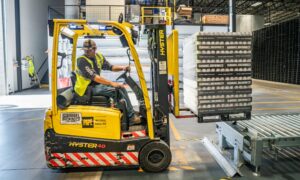Introduction
In the ever-evolving landscape of agriculture, technology has become a driving force behind increased efficiency, productivity, and sustainability. Precision farming, also known as precision agriculture, is at the forefront of this agricultural revolution. This advanced farming approach leverages cutting-edge technologies to optimize various aspects of crop production, resource management, and decision-making processes.
Understanding Precision Farming:
Precision farming is a data-driven agricultural management system that utilizes a combination of technologies such as GPS (Global Positioning System), sensors, drones, automation, and data analytics to make informed decisions about crop cultivation. The primary goal is to tailor farming practices based on real-time data, ensuring that resources are used efficiently and environmental impacts are minimized.
Key Components of Precision Farming:
1. Global Positioning System (GPS):
GPS technology plays a pivotal role in precision farming by providing accurate location data for various farm activities.
Farmers use GPS for precise mapping, enabling them to create detailed field maps that highlight variations in soil composition, moisture levels, and crop health.
2. Sensors and IoT devices:
Soil sensors, weather stations, and other Internet of Things (IoT) devices collect data on soil conditions, climate, and crop health.
This real-time information allows farmers to make data-driven decisions related to irrigation, fertilization, and pest control.
3. Automation and robotics:
Automated machinery, such as precision planters and harvesters, enhances efficiency by performing tasks with high precision and minimal human intervention.
Robotics aids in tasks like weeding, reducing the need for chemical inputs, and promoting sustainable farming practices.
4. Data Analytics and Farm Management Software:
Advanced analytics tools process data from various sources, offering insights into trends, patterns, and optimal farming practices.
Farm management software helps farmers plan, monitor, and analyze their operations, promoting informed decision-making.
Benefits of Precision Farming:
1. Increased crop yield:
Precision farming enables farmers to optimize inputs such as water, fertilizers, and pesticides, resulting in higher crop yields.
Accurate data on soil conditions helps tailor cultivation practices, ensuring crops receive the right nutrients and care at the right time.
2. Resource Efficiency:
By precisely applying inputs based on real-time data, precision farming minimizes resource waste, making agriculture more sustainable.
Efficient water use through targeted irrigation and optimized fertilization reduces the environmental impact of farming.
3. Cost Reduction:
Automated machinery and optimized resource use contribute to cost savings for farmers.
Precision farming helps minimize unnecessary expenses by focusing on the specific needs of each crop and field.
4. Environmental Sustainability:
Precision farming practices reduce the use of chemicals and promote environmentally friendly approaches to pest control and soil management.
The efficient use of resources contributes to the overall sustainability of agriculture, addressing concerns related to environmental degradation.
Challenges and Considerations:
1. Initial Investment:
Implementing precision farming technologies requires a significant upfront investment in equipment, sensors, and software.
Many farmers face challenges in adopting these technologies due to financial constraints.
2. Data Security and Privacy:
The collection and analysis of vast amounts of data raise concerns about the security and privacy of sensitive farm-related information.
Clear policies and regulations are needed to address these concerns and build trust among farmers.
3. Technical Knowledge and Training:
Farmers need to acquire the technical know-how to effectively use precision farming technologies.
Training programs and support systems are essential to bridge the knowledge gap and ensure successful adoption.
4. Integration with Existing Systems:
Integrating precision farming technologies with existing farm management systems can be challenging.
Compatibility issues may arise, necessitating seamless integration solutions.
The Future of Precision Farming:
1. Advancements in Technology:
Ongoing advancements in technology, such as the integration of artificial intelligence and machine learning, will further enhance the capabilities of precision farming.
Smarter decision-making algorithms will enable more accurate predictions and proactive management strategies.
2. Widespread Adoption:
As the benefits of precision farming become more evident and the technology becomes more accessible, widespread adoption is anticipated.
Government incentives and support programs can play a crucial role in encouraging farmers to embrace precision farming practices.
3. Collaboration and Data Sharing:
Collaboration between farmers, technology providers, and researchers will facilitate the sharing of data and best practices.
Open data platforms can emerge, fostering a collaborative approach to addressing agricultural challenges.
Conclusion
Precision farming stands as a beacon of innovation in agriculture, offering solutions to the challenges faced by farmers in a rapidly changing world. By harnessing the power of technology, farmers can optimize their operations, conserve resources, and contribute to a more sustainable and resilient agricultural ecosystem. As precision farming continues to evolve, it holds the promise of shaping the future of agriculture, ensuring food security, and mitigating the environmental impact of farming practices. Embracing this transformative approach is not only beneficial for individual farmers but is crucial for the global quest for a more sustainable and productive agricultural future.



































